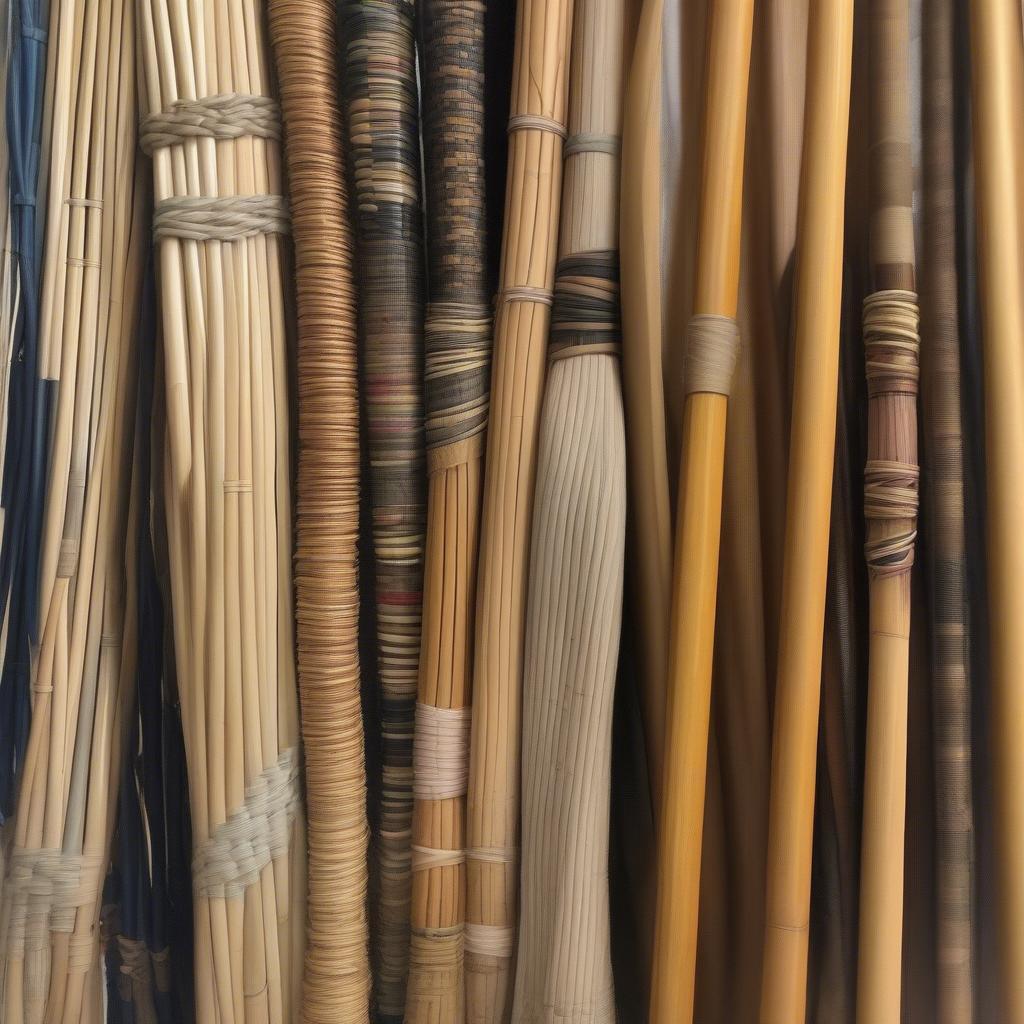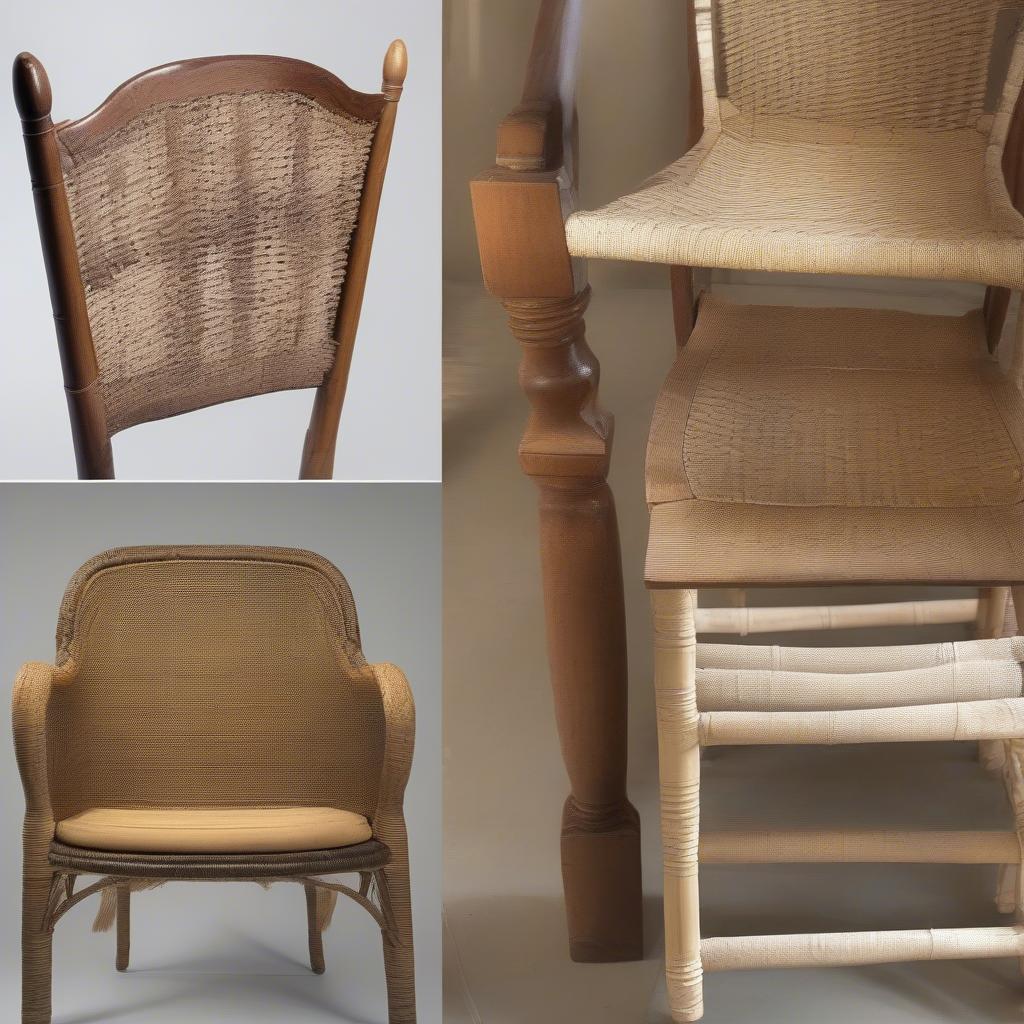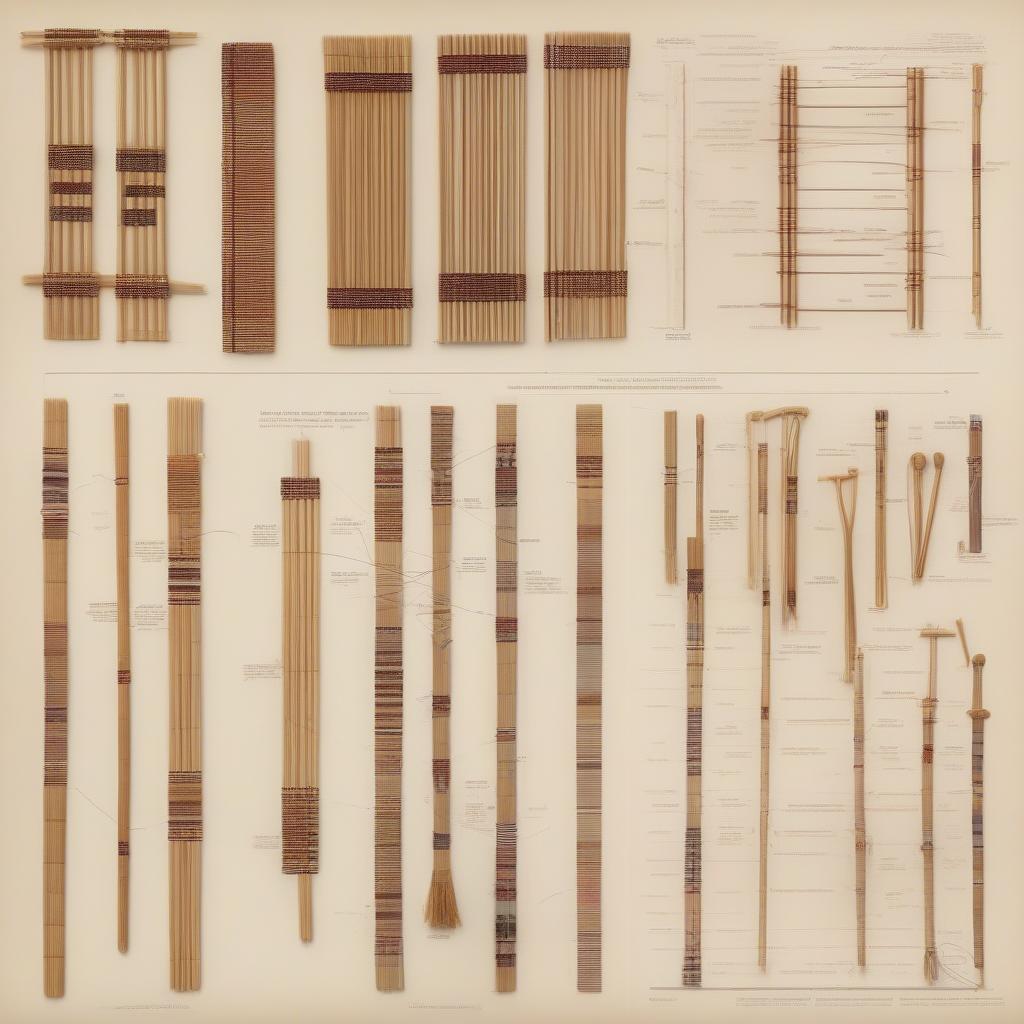Weave Chair
Weaving Chair Seats with Cane, Rush, and Splints
Weaving chair seats with cane, rush, and splints is a time-honored craft that allows you to breathe new life into old furniture or add a unique touch to a new piece. This article will guide you through the process of weaving chair seats with these natural materials, covering everything from choosing the right material to mastering various weaving techniques.
 Different Types of Cane, Rush, and Splints for Chair Seats
Different Types of Cane, Rush, and Splints for Chair Seats
Choosing the Right Material for Your Chair Seat
Selecting the appropriate material is crucial for a successful chair seat weaving project. Cane, rush, and splints each offer unique characteristics that make them suitable for different chair styles and weaving patterns. Cane, known for its durability and intricate patterns, is a popular choice for traditional chairs. Rush, a softer and more pliable material, offers a rustic, natural look. Splints, made from thin strips of wood, are versatile and can be used to create a variety of patterns. Which material you choose depends on the style of your chair, your desired aesthetic, and your weaving experience.
What are the key differences between these materials? Well, cane is typically more durable and allows for intricate patterns, while rush offers a more rustic aesthetic and is easier to work with for beginners. Splints fall somewhere in the middle, providing a good balance of durability and versatility.
 Comparing Cane, Rush, and Splint Durability
Comparing Cane, Rush, and Splint Durability
Preparing Your Chair Frame and Materials
Before you begin weaving, ensure your chair frame is sturdy and free of any loose parts. Sand down any rough edges and clean the frame thoroughly. Next, prepare your chosen material. Soaking cane, rush, or splints in warm water for a specified amount of time makes them pliable and easier to work with. The soaking time varies depending on the material and its thickness. This step is essential to prevent breakage and ensure a smooth weaving process.
How long should you soak the materials? While it varies, cane usually needs a longer soak than rush or splints. Always refer to the manufacturer’s instructions for specific recommendations.
Weaving Techniques: From Basic to Advanced
There are a variety of weaving techniques for chair seats, ranging from simple to complex. The basic techniques include the common “7-step” and “8-step” patterns, ideal for beginners. As you gain experience, you can explore more intricate designs like the herringbone or the star pattern. types of chair weaving offer a great starting point for learning different patterns. Each technique creates a unique texture and visual appeal, allowing you to customize your chair seat to your liking.
What’s the easiest technique for a beginner? The 7-step pattern is generally considered the easiest to learn and is a great starting point for beginners.
 7-Step Weaving Pattern Tutorial
7-Step Weaving Pattern Tutorial
Mastering the 7-Step Weave
The 7-step weave is a foundational technique in chair seat weaving. It involves a specific sequence of over-under movements with the cane, rush, or splint to create a sturdy and visually appealing pattern. Begin by securing your material to the frame and then follow the 7-step sequence, repeating it across the entire seat.
Exploring the 8-Step Weave
The 8-step weave is a slightly more advanced technique that builds upon the 7-step weave. It adds an extra step to the sequence, creating a denser and more intricate pattern. This technique requires more precision and attention to detail but results in a beautifully woven seat. types of chair weaving provides more information about different weaves.
Finishing and Caring for Your Woven Chair Seat
Once you’ve completed the weaving process, it’s important to finish and care for your woven chair seat to ensure its longevity. Trim any excess material and secure the ends tightly. Applying a sealant or varnish can protect the woven material from wear and tear, especially for chairs that will be used frequently. Regular dusting and occasional cleaning with a damp cloth will help maintain the beauty of your woven chair seat.
“A well-maintained woven chair seat can last for generations, adding a touch of timeless elegance to any home,” says renowned furniture restorer, Emily Carter. “Proper finishing and care are crucial to preserving the integrity of the weave and ensuring its long-lasting beauty.”
Conclusion
Weaving chair seats with cane, rush, and splints is a rewarding craft that allows you to create beautiful and functional pieces of furniture. Whether you’re restoring an antique chair or adding a personal touch to a new one, weaving your own seat can be a fulfilling experience. By choosing the right materials and mastering the weaving techniques, you can transform any chair into a unique piece of art. So, grab your materials and start weaving!
FAQ
- What is the best material for beginners?
- How long does it take to weave a chair seat?
- Where can I buy cane, rush, and splints?
- What tools do I need for chair seat weaving?
- Can I weave a chair seat over an existing fabric seat?
- How do I repair a broken cane or rush seat?
- What is the difference between pre-woven cane and hand-woven cane?
“Choosing the right material is the first step in creating a beautiful and durable woven chair seat,” adds furniture designer, John Miller. “Consider the style of your chair and the level of durability you need when making your selection.”
For further reading, explore other articles on our website about different types of chair weaving.
Need assistance? Contact our 24/7 customer support Hotline: +84 388 951 999, or visit us at Hanoi, Vietnam or Tech Avenue, Suite 12, San Francisco, CA 94105, USA.
